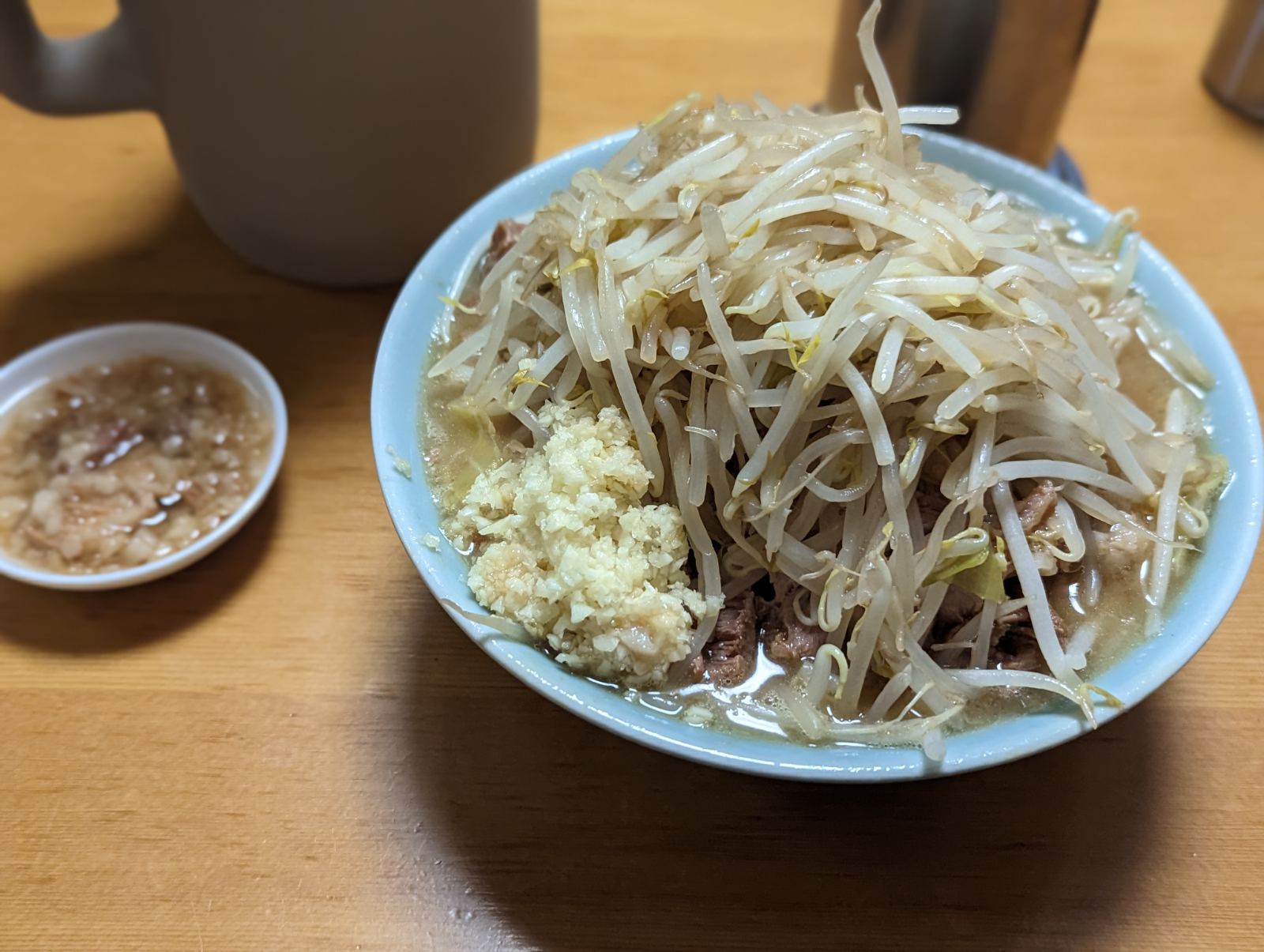What Is Jiro-Style Ramen? A Deep Dive with Momijiya
Bold, rich, overflowing with flavor—and often misunderstood. Let’s explore the world of Jiro-style ramen, with a special spotlight on Momijiya, one of Tokyo’s best-kept secrets.
Types of Ramen in Japan
Japan offers a wide variety of ramen styles, each with its own distinct flavor profile and regional charm. Some of the most popular include:
- Shoyu (醤油): Soy sauce-based broth, clear and savory
- Shio (塩): Salt-based broth, light and delicate
- Miso (味噌): Fermented soybean paste-based broth, rich and umami-packed
- Tonkotsu (豚骨): Pork bone-based broth, creamy and hearty
- Toripaitan (鶏白湯): Chicken bone-based creamy broth, rich but lighter than Tonkotsu-> Google Maps
- Niboshi (煮干し): Dried sardines-based broth, intensely umami and slightly bitter-> Google Maps
- Kombu Dashi (昆布出汁): Kelp-based broth, pure umami, often used in combination
- Gyokai (魚介): Seafood (fish, shellfish) based broth, rich and aromatic, often blended -> Google Maps
- Vegetable Broth (野菜出汁): Plant-based broth, lighter and sweeter, vegan-friendly
- Tsukemen (つけ麺): Dipping noodles with concentrated soup on the side -> Google Maps
- Abura Soba (油そば): Brothless ramen tossed in savory sauce, often with vinegar and chili oil -> Google Maps
- Jiro-kei (二郎系): A subculture of its own, ultra-rich pork-based ramen with massive toppings -> Google Maps
What Defines Jiro-Style Ramen?
Jiro-style ramen ("Jiro-kei") originates from the legendary Jiro in Tokyo and is known for its ultra-rich tonkotsu-shoyu base, extra-thick noodles, and an avalanche of toppings. It's less of a meal and more of an event. One of its defining rituals is the "コール (call)"—a custom way of ordering your preferred toppings.
When the staff asks how you’d like your ramen, saying "Zembu" (meaning "everything") gets you a full experience: garlic, vegetables, fat, and soy sauce intensity.
Introducing Momijiya – A Jiro Gem
Located in [insert area], Momijiya is a local favorite that softens the edges of traditional Jiro-kei while keeping its core essence. The shop welcomes newcomers and veterans alike, offering a punchy yet balanced bowl.

The Momijiya Experience
コール (Call): I went for the full experience—"前部増し (Zembu)"—which gives you everything maxed out. Just say "Zembu" when prompted.
スープ (Soup): The broth hits you before you even step inside—the garlic-laced tonkotsu-shoyu aroma drifts into the street. Rich, salty, and full of umami, it warms you up instantly.
麺 (Noodles): Momijiya’s house-made noodles are thick and crinkly. Slightly undercooked in the best way, they retain a firm chew and release a faint sweetness from the wheat as you bite in.
野菜 (Vegetables): A generous heap of bean sprouts and cabbage (roughly 80:20 ratio) is boiled soft and piled high. Many treat it as a warm-up course, dipping each bite in soup or combining it with the pork fat (Abura), which can be served on the side if requested.
チャーシュー (Chashu Pork): The pork slices are deeply marinated in soy sauce, bringing a bold, savory flavor. Quite salty on their own, they pair perfectly with the noodles and vegetables.

Tips for First-Timers
- Be ready to respond quickly to the コール. Saying "Zembu" is a safe bet if you're hungry and adventurous.
- Even the "small" portion is huge. Don’t overestimate your appetite.
- Carry cash. No cards, and no excuses.
Location & Info
📍 Ramen Momijiya on Google Maps
Final Thoughts
Momijiya is the kind of place that proves Jiro-style ramen doesn’t have to be intimidating. It’s bold but not brutal, rich but balanced. For anyone curious about diving into the world of Jiro, Momijiya is an ideal entry point.